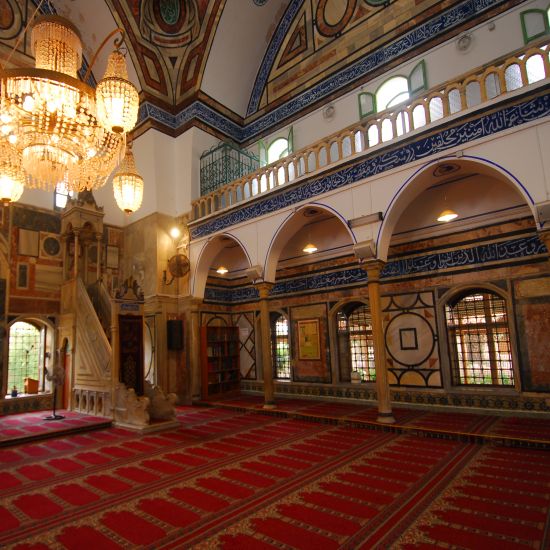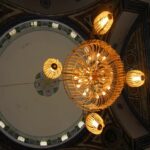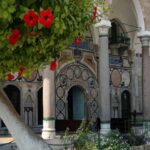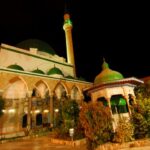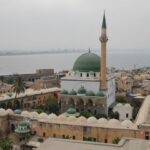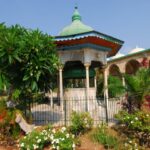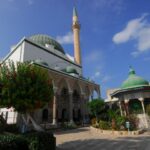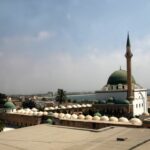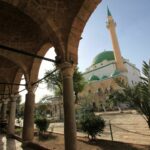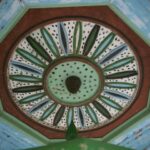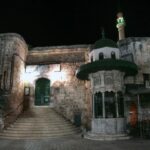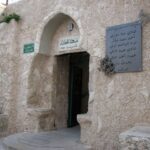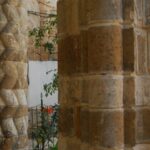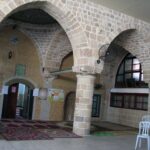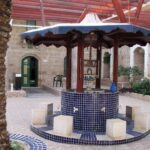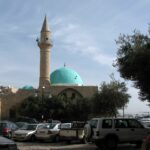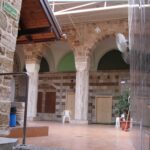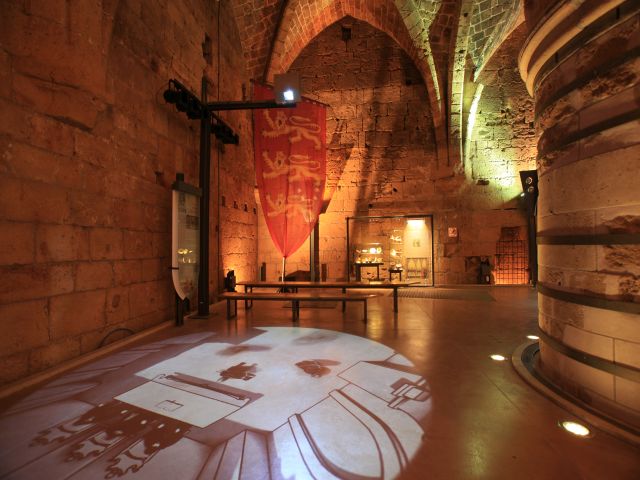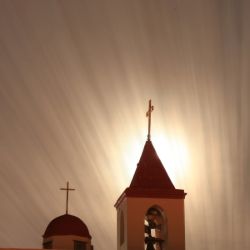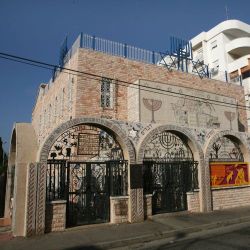Visit Al Jazzar Mosque, one of Israel’s most spectacular Mosques.
In Old Akko 6 mosques: the largest and most impressive of all the Al Jazzar Mosque,the largest in Israel outside Jerusalem area. The other mosques in the city: al-Majdala (Majdal villagers’ Mosque), al-Zeituna (its name is associated with the olive trees that were previously planted in its courtyard), al-Ramel, al-Bahar and al-Mu’aleq.
Al-Jazzar Mosque
Al-Jazzar Mosque, which is known in Arabic as Jama El-Basha (the Pasha’s Mosque), was also formerly known as Jama El-Anwar (the Mosque of Lights), according to the Vakfiye of Ahmed Al-Jazzar Pasha. This is Israel’s largest mosque outside of Jerusalem and the largest one among the mosques built in Israel during the Turkish period. The building dominates Akko’s skyline to this very day.
Based on the Arabic inscription engraved over the front door, the mosque was inaugurated around 1781 AD (1196 according to the Hijra calendar, which begins with the migration of Muhammad from Mecca to Medina), i.e. in the early years of Al-Jazzar Pasha’s rule in Akko.
Al-Majdala Mosque
Al-Majdala Mosque (the Majdal people mosque) was built in 1809 (1224 according to the Hijra calendar, which begins with the migration of Muhammad from Mecca to Medina) by Mamluk Ali Aga, Suleiman’s deputy who was in charge of the Wilāyah Treasury and of managing the Pasha’s court affairs.
The mosque is located in the city’s northwest across, and slightly east of, Ali Aga’s house. In 1810, Ali Aga added a minaret to the mosque, thereby completing its construction. The mosque is named after the village of Majdal, many of whose residents moved to this neighborhood in Akko.
Al-Zeituna Mosque
Al-Zeituna Mosque is located south of Zawayat El-Shadlia, where Maria of Jehoshafat Church stood during the Crusader Period, south of the Hospitaller Quarter. Widespread tradition has it that the name of the mosque is associated with the olive trees that were once planted in its courtyard.
The mosque was built in the period of Dahar El-Omar by Haj Muhammad El-Zadaki, who also founded the wakf it is associated with. The wakf was first managed by the Sheikh Nur El-Zadaki family and from 1898 to 1905 (1316 to 1323 according to the Hijra calendar, which begins with the migration of Muhammad from Mecca to Medina), by the El-Aravi family.
Al-Ramel Mosque
The first mosque built in Akko was the mosque of the sea. In 1702 (1114 according to the Hijra calendar, which begins with the emigration of Muhammad from Mecca to Medina), with the city’s growing Muslim population, a second mosque was built in Akko to accommodate the believers who did not live near the seashore.
The mosque was built by Haj Muhammad Ibn El-Sheikh El-Shabi and – at the time – it also housed the Al-Shabi bathhouse, a coffee house, storerooms, shops and more. The Haj’s cousin, Sheikh Salach Ibn El-Sheikh Hussein, was appointed to supervise the wakf and the mosque
Al-Bahar Mosque
The Al-Bahar or Al-Mina Mosque (formerly the Sanan Pasha Mosque), which was close to the Khan el-Franj, is the first Muslim house of worship referred to in the writings of the Ottoman Period. The Mosque is believed to have been built in the late 16th century.
Al-Mu’aleq Mosque
(the ancient synagogue of AKKO) Al-Mu’aleq Mosque, also known as the Mosque of Tahar el-Omar, is located slightly north of Khan al-Umdan.
The building was erected by Sheikh Suhil, who died in 1748 (1161 according to the Hijra calendar, which begins with the emigration of Muhammad from Mecca to Medina).
